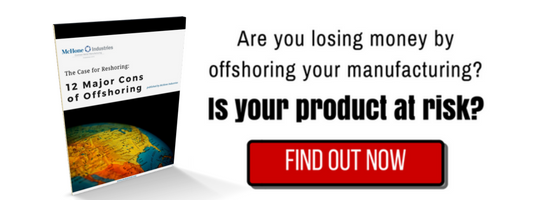 Metals like steel and aluminum, while crucial to many applications, have a glaring issue. They’re particularly susceptible to market fluctuations, prone to potential scarcity and sociopolitical upheaval and a financial target in the tug-of-war that is global trade.
Metals like steel and aluminum, while crucial to many applications, have a glaring issue. They’re particularly susceptible to market fluctuations, prone to potential scarcity and sociopolitical upheaval and a financial target in the tug-of-war that is global trade.
In the United States, aggressive tariff moves by President Donald Trump’s White House have left manufacturers wondering about the current state of prices.
So, is steel cheaper than aluminum? Can you rely on your normal supply chains to produce it affordably anymore?
Is Steel Cheaper Than Aluminum?
Aluminum is the New Gold
When the country cannot produce enough of a necessary substance -- oil, produce, meat -- the answer has historically been to import it from another country that can produce more reliable volumes. In March 2018, that go-to solution took a big hit in the form of a 10% aluminum tariff on imports into the United States.
Though 10% may not sound like much, when an entire material supply chain is balanced on specific margins, even a small shift can slam doors of opportunity and pick off smaller distributors from the competitive pool. This has the net effect of driving up prices as the larger competitors pass the financial wounds down to the next customer to stay afloat.
Aluminum saw this very effect play out, helped in no small part by speculation and healthy media coverage of the impending tariffs, heralding balance-sheet doom for everything from soda can makers to aircraft manufacturers that rely heavily on aluminum.
Trustworthy Steel Stays Strong
Everyone from industry leaders to small-town manufacturers nervously watched the news in 2018. At this point the "Is steel cheaper than aluminum?" question has been answered: definitely.
While it’s heavier, more vulnerable to rust, and less malleable than aluminum, steel is a tried and true material that makes the "bones" of many structures. The steel industry has also, predictably, perked up considerably in the wake of optimistic language from Trump. there are few industries that wouldn't benefit from a strong, encouraging narrative from a world leader, after all.
Though few of the reported benefits of the upturn have reached workers on the proverbial front lines, the ramping up of manufacturing speed and volume in response has had an undeniable effect on supply chain flow and demand satisfaction, breeding more of the same.
The Future: Steel Versus Aluminum
While the will-he-or-won't-he of Trump's trade war with China continues to inject both the steel and aluminum markets with price-tamping insecurity, expect steel to keep its slim lead.
U.S. aluminum and steel are heavily sourced from Canada. America’s Hat is contending with issues of its own, such as fending off inferior materials flooding the global market in the wake of U.S. tariffs. While the NAFTA-replacing USMCA (United States Mexico Canada Agreement) aims to balance the scales of material trade flow, the true effects may take months and years to set metal prices on a predictable path.


